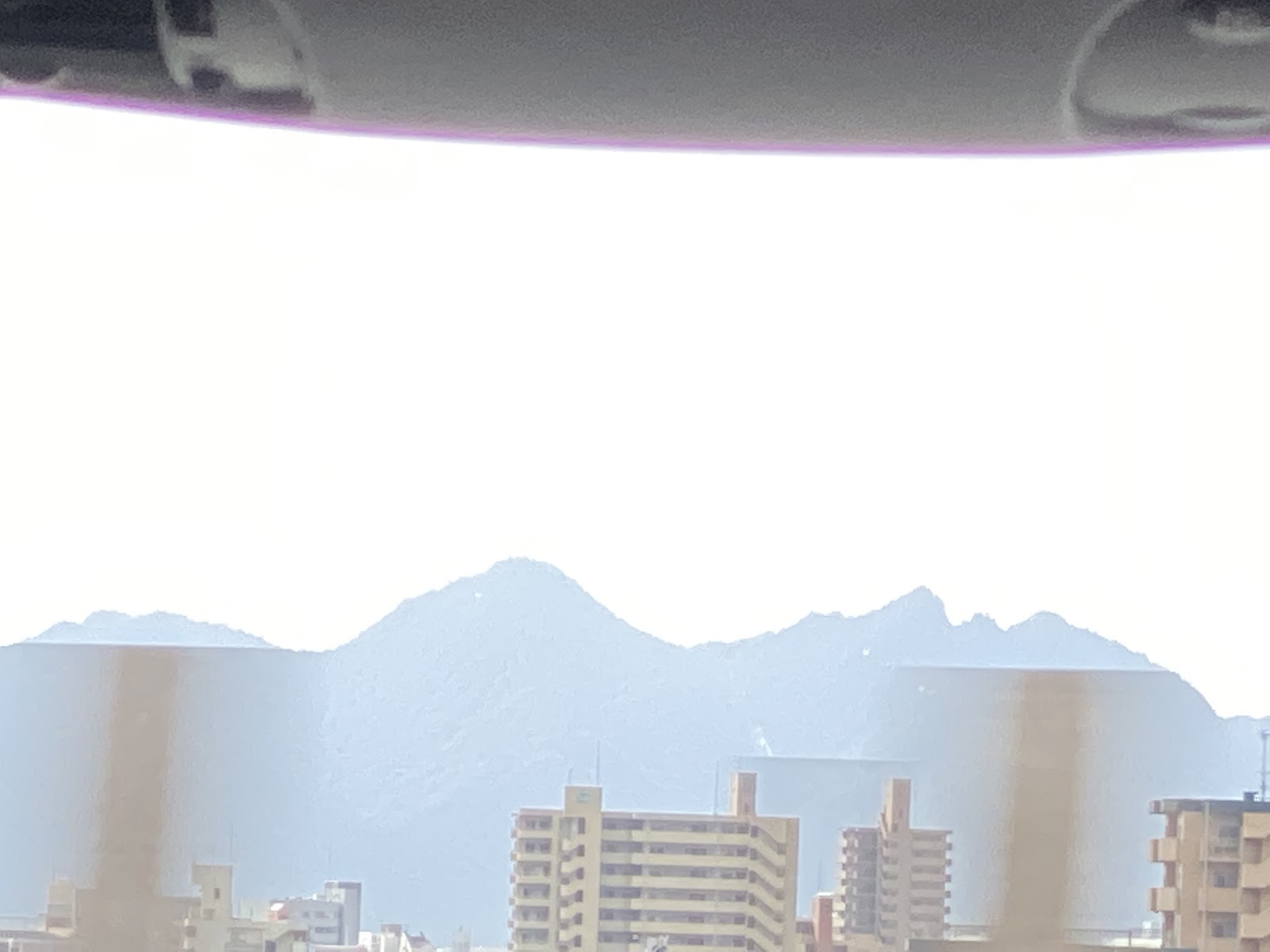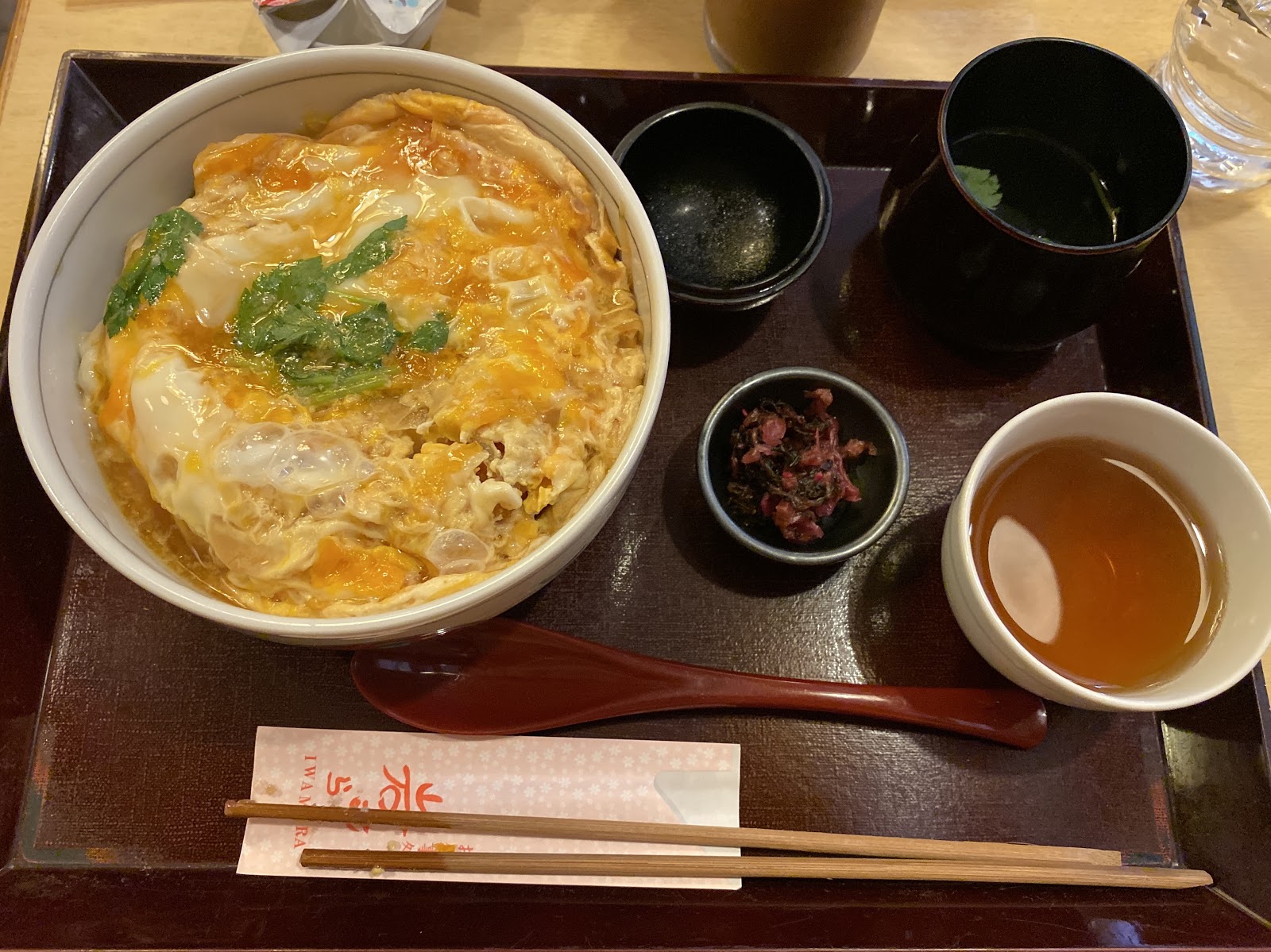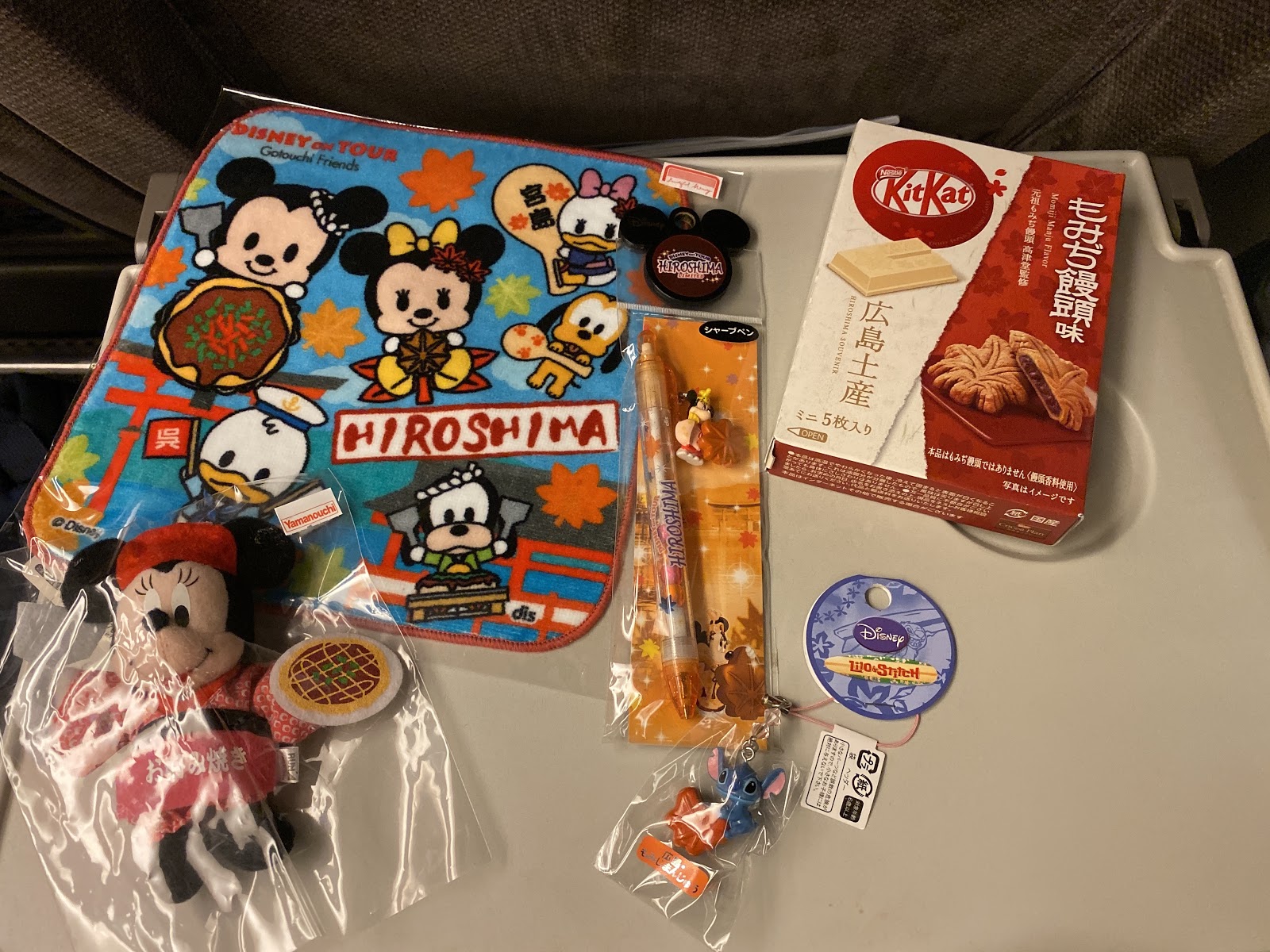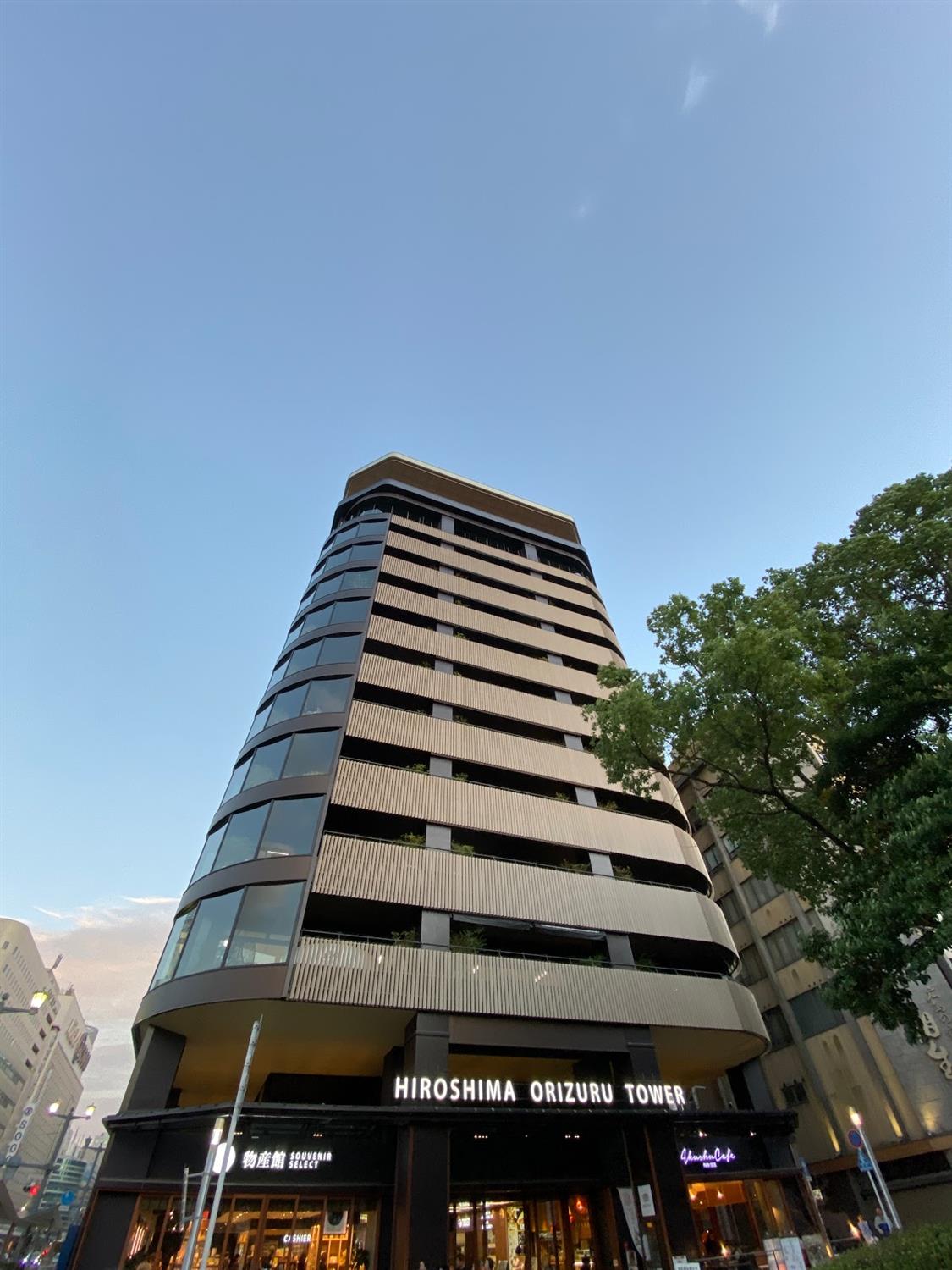Adventures by Disney Japan Day 3: Gateway to Peace
Thanks to the magic of the Shinkansen, Japan’s high speed bullet train, today’s destination on our third day in Japan with Adventures by Disney took us to Kyoto station to travel almost 200 miles per hour to Hiroshima in the south. The station was clean, odor-free, and featured a variety of convenience stores and vending machines. In addition, the trains have restrooms and a traveling cart full of beverages and snacks, but not bottled water so our Adventure Guides offered bottles before we got on the train.
We were seated in first class with reclining seats, tray tables, and window shades. The 90-minute ride was so smooth and I wish we had trains like these in the United States. The trip was also a great way to see other parts of Japan through the large windows. The architecture varies drastically, with farm fields existing along the tracks between well developed areas with buildings of modern and traditional designs.
[gallery ids="809319,809320,809321,809322,809323,809324"]
Once we arrived in Hiroshima, we boarded a bus and met our local guide Tadashi, who made a joke about being from “Big Hero 6.” He gave us some of the history of Hiroshima and pointed out the sights on our way to a ferry terminal that would take us to Miyajima Island. The island was named for a female deity because the mountains look like a woman laying on her back.
Epcot fans will want to visit Miyajima Island to see the floating Torii Gate from the Japan Pavilion. It undergoes construction every 100 years and we were lucky enough to get photos of it under scaffolding. You could still see it somewhat and the refurbishment didn’t impact our ability to enjoy the Itsukushima Shinto shrine, which is built over the water and features some breathtaking views. And even though the gates were obstructed, strolling the market revealed plenty of opportunities to see them celebrated in a variety of ways, including souvenir figures of the gates.
[gallery ids="809326,809327,809328,809329,809330,809331,809332,809333"]
After the shrine tour, travelers were given the option of heading back to the shopping and dining area of the island early, or joining the local expert for a visit to Buddhist Temple called Daisho-In. The temple had a garden full of over 100 statues of Buddhist disciples and nobody knows who knitted the hats on their heads. The Dhalai Lama visited the temple and a sand mandala has been preserved under glass from his visit. Our local expert took us on an underground dark winding path while we repeated a mantra to cleanse our souls, as the temple enshrines three demons that bring the area prosperity from visiting shoppers. On our way down, we were able to spin metal rollers that contain sutras. It is said that spinning them is the same as saying them so we all felt pretty accomplished by the time we reached the bottom of the hill.
[gallery ids="809334,809335,809336,809337,809338,809339,809340,809341"]
On our own for lunch, we first got some tempura from a kart before visiting one of the recommended restaurants for some katsudon (fried pork rice bowl). The region is famous for oysters and we got to see the floating oyster farms on the ferry ride over. It’s also famous for lemons and maple leaves, with many of the restaurants and sweet shops serving up variations on these items. The local deer have grown so accustomed to people and now expect to be fed, but our guides asked us to refrain from doing so. We were also advised to keep our belongings elevated if a deer approaches as they have been known to steal bags off visitors to see if they have any food.
If we had been really smart, we would have eaten at the Rilakkuma restaurant. It looked adorable, or as the Japanese would say, kawaii!
[gallery ids="809343,809344,809345,809346,809347,809348"]
We had time to do some shopping and discovered quite a few Disney items exclusive to Hiroshima and Miyajima Island, including a Minnie Mouse keychain featuring Okonomiyaki, the dinner we would have later, and a Hiroshima hand towel featuring Mickey and friends enjoying the area. I added a charm of Stitch eating a maple cookie to my lanyard, where it joined a few charms I picked up at the temples we’ve visited.
After taking a ferry back to Hiroshima, we returned to the bus heading to Hiroshima Peace Park. Tadashi told us about life in Hiroshima before the atomic bomb and why Hiroshima was chosen as the dropping location. As we pulled into the museum, our Adventure Guides explained that we could spend up to an hour inside but that anyone not interested could explore the nearby area instead. The ticket was made of recycled origami paper as the museum receives over 10 million origami crane donations every year. A clock at the entrance lists the number of days since the first atomic bomb as well as the number of days since the last atomic test. The museum exists to show the world the horrors of atomic bombs so that mankind doesn’t make the same mistake twice.
The exhibit starts with the bomb dropping. Large murals show images of the devastation and a rotunda uses projection mapping to show the hypocenter and how the bomb leveled most of the area. The next room featured some items that survived the bomb with significant damage. It’s hard to hold back tears as you’re looking at burned clothing items that were taken off the bodies of dead children. The museum also preserves some walls from the city, including the steps of a bank where the shadow of a man who was sitting on the steps left a permanent silhouette. One aspect of the bombing that textbooks don’t focus on is the black rain that occurred afterwards and the museum also has items that were permanently stained by the black rain that exposed an even wider area of Japan to the harmful radiation.
After exploring inside the busy museum, Tadashi took us through the peace park, which includes a stone chest that contains books with the names of the lives lost as a result of the atomic bomb. This not only includes the 140,000 who died directly from the bombing, but also 180,000 who died of the harmful effects of the radiation exposure in the years that followed. The books are still being updated annually. Tadashi told us that President Obama was the first US President to visit the site and he placed flowers before the memorial in addition to folding paper cranes, which were on display in the gallery.
Another area of the park features the statue of Sadako that her classmates fundraised for. Glass enclosures radiate around the statue full of origami cranes and the museum has to rotate them out beside they come in so quickly. The exhibit has a few of Sadoko’s personal items, indexing a few of the cranes she folded in the hospital. Sadako and the Thousand Paper Cranes was how I was first introduced to World War II history in elementary school.
[gallery ids="809358,809361,809363,809366,809368,809371,809374"]
Another stop was a building that has been preserved from the bombing as a stark reminder of the events of August 6th, 1946. The entire park was once the center of life in Hiroshima and it was almost completely flattened by the bombing.
To get to our next location, we walked across the infamous T-shaped bridge that was the intended target of the bombing. The bomb veered slightly off course and from the top of Orizuru Tower, our guides pointed out where the specific hypocenter was, which was a doctors office before the bomb and is a doctor’s office in the new Hiroshima of today. It’s even generational, a descendant of the doctor who worked in that spot when the bomb fell.
At the top of the tower we made paper cranes and had the option of soaring them down an infinity drop or keeping them. When we entered the building, we couldn’t see the glass side that is going to be completely full of paper cranes made by visitors someday. It was touching to see how many there are and to see the few that our Adventures by Disney group added at the very top.
Our pin for the day was a rarity according to our Adventure Guides as it does not feature a Disney character. Instead, it features a paper crane surrounded by cherry blossoms and the day’s theme, “Gateway to Peace.” A big theme of the day was how the city of Hiroshima rebuilt itself after an immense tragedy. One of the many amazing facts revealed through the adventure was that trains resumed operation just three days after the bombing.
Dinner was a Hiroshima specialty, Okonomiyaki. It’s a famous dish in Osaka as well, but the Hiroshima version adds noodles to the savory pancake with layers of cabbage, egg, pork, and yummy brown sauce. The dish is cooked right in front of you similar to Mitsukoshi Teppan Edo in Epcot and you eat directly off the grill. Everyone loved it!
Another Epcot touch was the design of Hiroshima Station, which features geodesic patterns similar to Spaceship Earth on the columns.
Our nighttime Shinkansen train ride back to Kyoto was very relaxing. Our bellies and hearts were so full after an unforgettable day in Hiroshima and Miyajima Island. Tomorrow we will explore more of Kyoto with an optional excursion to Osaka, which we intend to visit. Until next time, sayonara!


































